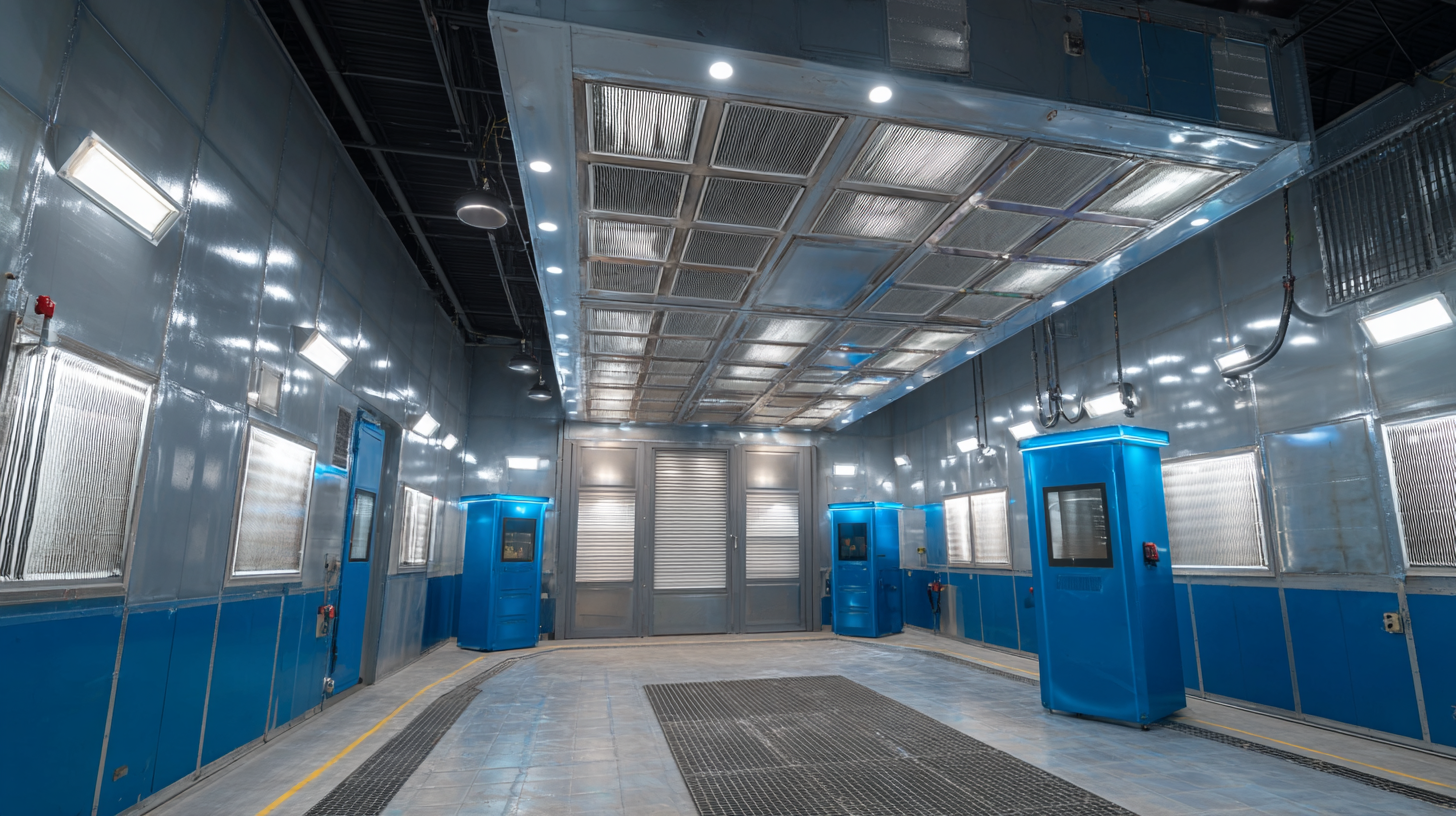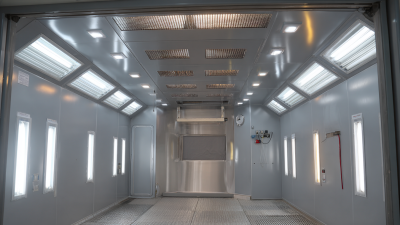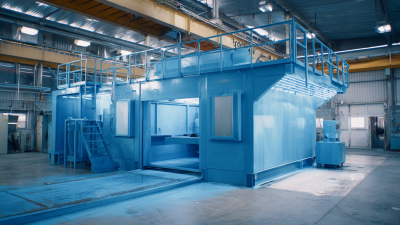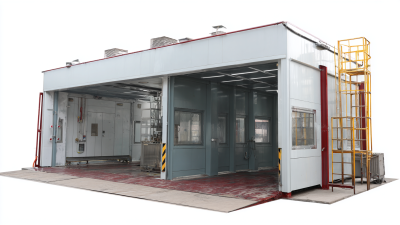OPEN FROM 9AM TO 5PM – CLOSED ON WEEKENDS
Top 10 Spray Booth Filters You Need for Optimal Air Quality and Efficiency
In the realm of paint finishing and automotive refinishing, the significance of maintaining optimal air quality cannot be overstated. According to the U.S. Environmental Protection Agency (EPA), poor air quality can lead to a myriad of health issues, while efficient paint application processes heavily rely on effective filtration systems.
 Spray booth filters are integral components in ensuring that contaminants are captured, thereby safeguarding both the environment and the health of workers. Reports indicate that nearly 30% of paint-related waste is attributed to inefficient spray booths, underscoring the necessity for high-quality spray booth filters.
Spray booth filters are integral components in ensuring that contaminants are captured, thereby safeguarding both the environment and the health of workers. Reports indicate that nearly 30% of paint-related waste is attributed to inefficient spray booths, underscoring the necessity for high-quality spray booth filters.
The selection of the right spray booth filters can drastically improve air quality and operational efficiency, which can ultimately lead to cost savings for businesses. Research from leading industry experts suggests that upgrading to advanced spray booth filters can reduce VOC emissions by up to 90%, ensuring compliance with increasingly stringent environmental regulations. With advancements in filter technology, today's options provide unparalleled efficiency, allowing businesses to not only meet compliance benchmarks but also enhance their overall productivity. Thus, understanding the various types of spray booth filters available on the market is crucial for any operation aiming to optimize performance and maintain a safe working environment.
Essential Characteristics of High-Quality Spray Booth Filters for Air Quality
When selecting spray booth filters to ensure optimal air quality and efficiency, it is essential to focus on several key characteristics. First and foremost, high-quality filtration media is crucial. Filters made from advanced synthetic materials or fiberglass can capture a higher volume of particulates, VOCs, and overspray, providing a cleaner environment for both workers and the workpiece. Look for filters with a high MERV (Minimum Efficiency Reporting Value) rating, as this indicates superior filtration capabilities and ensures that even the smallest contaminants are effectively trapped.
In addition to material quality, the filter's design plays a significant role in its overall performance. Filters that feature pleated designs increase the surface area, allowing for better airflow and longer service life. Moreover, ease of installation and replacement should not be overlooked; filters that fit seamlessly into the spray booth system can enhance operational efficiency and reduce downtime. Lastly, consider filtration systems that offer a multi-layer approach, combining different types of media to tackle various air quality issues simultaneously. Prioritizing these characteristics will help maintain optimal air quality while maximizing the efficiency of spray booth operations.
Top 10 Spray Booth Filters You Need for Optimal Air Quality and Efficiency
| Filter Type | Efficiency Rating (%) | Particle Size Removed (microns) | Lifespan (Hours) | Application |
|---|---|---|---|---|
| HEPA Filter | 99.97 | 0.3 | 2000 | General Use |
| Activated Carbon Filter | 95 | > 10 | 1500 | Odor Control |
| Pre-Filter | 85 | > 5 | 1000 | Dust & Dirt Removal |
| Fine Filter | 95 | 0.5 | 1200 | Spray Applications |
| High-Efficiency Particulate Air (HEPA) Filter | 99.99 | 0.3 | 3000 | Medical & Clean Room |
| Electrostatic Filter | 90 | 1.0 | 800 | Industrial |
| Custom-Made Filters | Variable | Variable | Variable | Tailored Solutions |
| MERV 13 Filter | 95 | 0.3 | 1500 | Residential |
| Bag Filter | 75 | 3.0 | 1000 | General Dust |
| Carbon Filter Foams | 85 | Variable | 1200 | Solvent Removal |
Top 5 Types of Spray Booth Filters to Maximize Efficiency
When it comes to maintaining optimal air quality and efficiency in spray booths, selecting the right filters is crucial. The five primary types of spray booth filters—mesh, polyester, HEPA, electrostatic, and activated carbon—each play a significant role in ensuring clean air flow and product quality. According to a report by the American Spray Booth Association, using high-efficiency filters can reduce paint overspray by as much as 99%, leading to significant cost savings and improved sustainability for businesses.
Mesh filters are often favored for their durability and reusability, making them a cost-effective choice for many operations. Polyester filters, on the other hand, offer higher dust-holding capacities and better efficiency in capturing particulate matter. HEPA filters are widely recognized for their ability to remove airborne particles as small as 0.3 microns, providing a vital layer of protection in environments where air quality is paramount. Moreover, electrostatic filters use static electricity to attract and capture pollutants, while activated carbon filters excel at adsorbing chemical vapors, enhancing the overall air quality within the spray booth.
Implementing a combination of these filters can significantly elevate the performance and efficiency of spray booths. Industry standards indicate that maintaining optimal filter performance not only improves air quality but also prolongs equipment lifespan and reduces energy consumption by up to 30%. By understanding the benefits of each filter type, businesses can make informed decisions that contribute to a safer and more efficient working environment.
How to Choose the Right Spray Booth Filter for Your Specific Needs
 When selecting the right spray booth filter for your needs, consider the specific applications and environments in which you'll be working. Different filters serve distinct purposes, such as capturing overspray, reducing VOCs, or maintaining airflow. To ensure optimal performance, assess the types of materials you will be spraying and choose filters designed to capture those particles effectively.
When selecting the right spray booth filter for your needs, consider the specific applications and environments in which you'll be working. Different filters serve distinct purposes, such as capturing overspray, reducing VOCs, or maintaining airflow. To ensure optimal performance, assess the types of materials you will be spraying and choose filters designed to capture those particles effectively.
Tips: Look for filters with a high MERV rating, as they indicate better filtration efficiency, ensuring that even the smallest particles are captured. Additionally, consider how often you will need to replace the filters to maintain air quality without incurring excessive costs.
Another crucial factor is the size of the filter and its compatibility with your spray booth. Always check the manufacturer’s specifications before making a purchase. By measuring your booth dimensions, you can ensure that you select a filter that not only fits properly but also enhances airflow, thus improving overall efficiency.
Tips: Regular maintenance and monitoring of filter performance can significantly prolong their lifespan. Set a schedule for checking filter conditions, and be proactive about replacements to avoid any compromise in air quality.
Maintenance Tips to Extend the Lifespan of Your Spray Booth Filters
Maintaining spray booth filters is essential for achieving optimal air quality and ensuring the efficiency of your spray booth operations. According to a report by the National Institute for Occupational Safety and Health (NIOSH), proper filter maintenance can reduce airborne contaminants by up to 80%, significantly improving both worker safety and product quality. To extend the lifespan of your spray booth filters, it's crucial to implement regular inspection and cleaning protocols. Establishing a routine maintenance schedule, ideally every 30 days, can help identify when filters need replacement or cleaning before they become inefficient.
One effective tip for enhancing the longevity of your spray booth filters is to choose the right type of filter based on your specific applications. High-efficiency particulate air (HEPA) filters, for instance, can capture 99.97% of particles as small as 0.3 microns, making them an excellent choice for environments that require stringent air quality. Additionally, consider using pre-filters that can trap larger particles before they reach the main filter. This not only improves the overall performance of your filtration system but can also reduce the frequency of filter changes, saving costs in the long run.
Regular monitoring of airflow is another critical maintenance tip. A consistent drop in airflow may signal that your filters are clogged and need replacing. Utilizing an airflow gauge can help you keep track of this and maintain optimal performance. By following these maintenance tips, you can ensure the longevity of your spray booth filters and create a safer, more efficient working environment.
Top 10 Spray Booth Filters Performance Comparison
This chart represents the efficiency percentage of the top 10 spray booth filters. Higher efficiency ratings indicate better air quality and performance.
Understanding MERV Ratings: What You Need to Know for Optimal Filtering
When it comes to maintaining optimal air quality in spray booths, understanding MERV (Minimum Efficiency Reporting Value) ratings is crucial. MERV ratings range from 1 to 16, with higher numbers indicating a filter’s ability to capture smaller particulate sizes. For instance, filters with a MERV rating of 13 to 16 can capture particles as small as 0.3 microns, which includes allergens like pollen, dust mites, and even some bacteria. The EPA reports that poor air quality due to inadequate filtration can lead to respiratory issues and decreased productivity in industrial settings, emphasizing the importance of selecting the right filter for spray booths.
Recent industry studies have shown that using high-MERV filters significantly reduces the concentration of airborne pollutants. A study published in the Journal of Occupational and Environmental Hygiene found that upgrading from a MERV 8 to a MERV 13 filter can reduce particulate matter in the air by up to 80%. This not only enhances worker safety but also protects equipment from damage caused by particulate accumulation. By choosing the right spray booth filters based on MERV ratings, businesses can ensure a healthier work environment and enhance overall operational efficiency.

Related Posts
-

2025 Top Digital Spray Booth Filters for Enhanced Performance and Efficiency
-

Exploring the Future of Surface Finishing with Innovative Powder Coating Equipment for Sale
-

Discover the Benefits of Buying a Used Paint Booth for Your Business Necessities
-

Unleashing Efficiency: The Ultimate Guide to Choosing Powder Coating Equipment for Sale in 2023
-

Understanding the Benefits of Powder Coating Equipment for Your Business Growth
-

Essential Guide to Paint Booth Rental: Boost Your Business Efficiency with the Right Space

